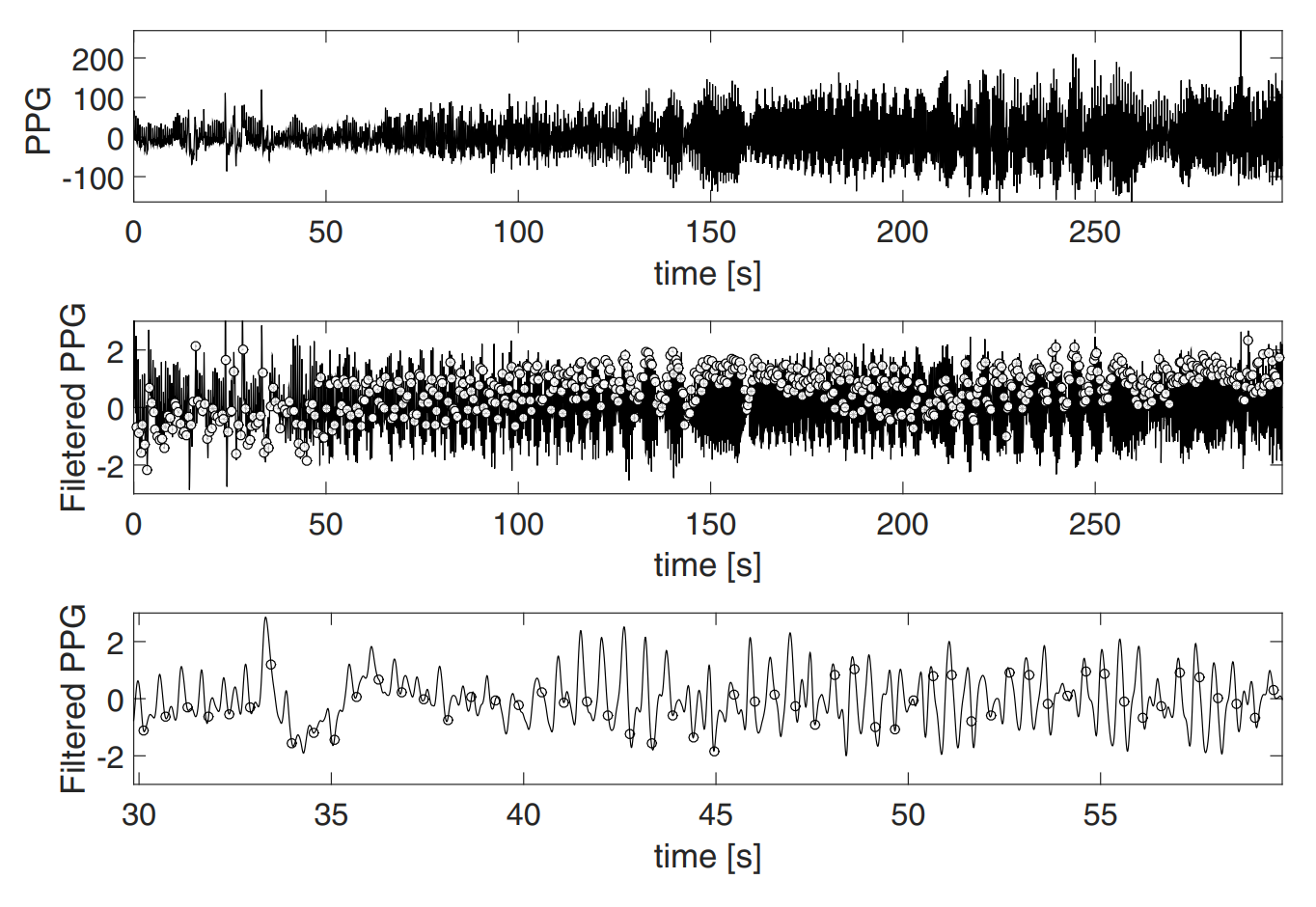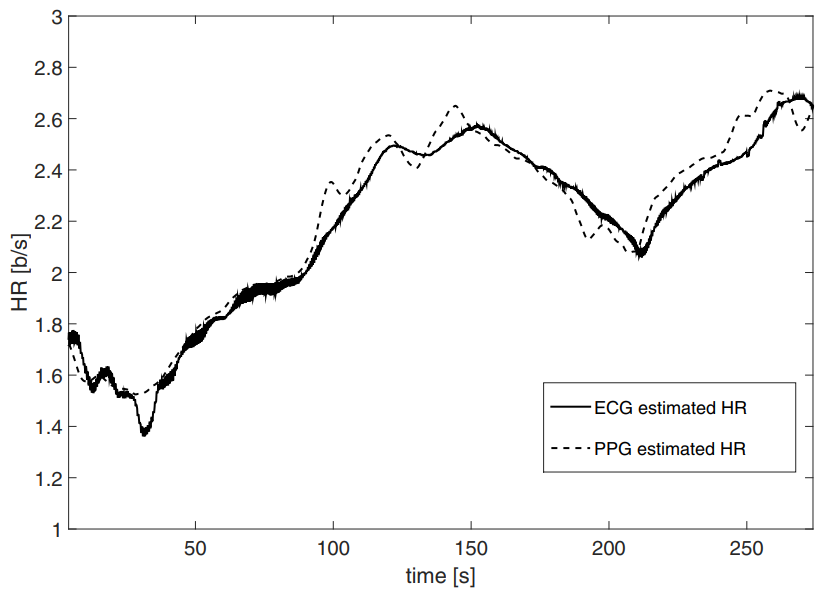July 30, 2015 / by Giorgia Cantisani / PPG
A supervised learning approach for the robust detection of heart beat in plethysmographic data
Wearable devices for hart beat detection
Wearable devices equipped with photoplethysmography (PPG) sensors are gaining an increased interest in the context of biometric signal monitoring within clinical, e-health and fitness settings. When used in everyday life and during exercise, PPG traces are heavily affected by artifacts originating from motion and from a non constant positioning and contact of the PPG sensor with the skin.
Problem of robustness
Many algorithms have been developed for the estimation of heart-rate from photoplethysmography signals. We remark that they were mainly conceived and tested in controlled settings and, in turn, do not provide robust performance, even during moderate exercise. Only a few of them have been designed for signals acquired at rest and during fitness. However, they provide the required resilience to motion artifacts at the cost of using computationally demanding signal processing tools.

Proposed approach
At variance with other techniques relying on filtering to clean the PPG signal and estimate the heart-rate or the beat-related peaks, or resolving to detecting and tracking the correct spectral peak throughout the signal, we propose a learning approach to estimate the position of heart beats in PPG time series. From a training set of labelled PPG segments corresponding either to the start of a heart beat or to an inter-beat position, a set of features is extracted and subsequently utilized to train a supervised classifier to detect two type of samples, i.e., beat (HB) vs inter-beat (NHB).
We show that even with a very limited set of time-domain features, the detection error for single segments can be made low, thus allowing the reliable estimation of the heart-rate through lightweight postprocessing.

For more details, please refer to the paper A supervised learning approach for the robust detection of heart beat in plethysmographic data by Grisan E. et al., EMBC, 2015.
This project was part of my Bachelor Thesis conducted at the University of Padova under the supervision of Professor Enrico Grisan.

